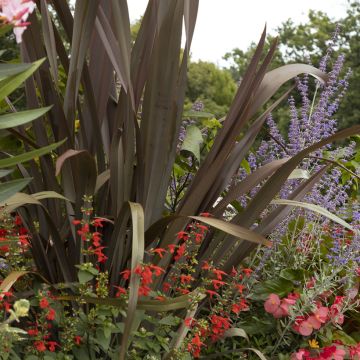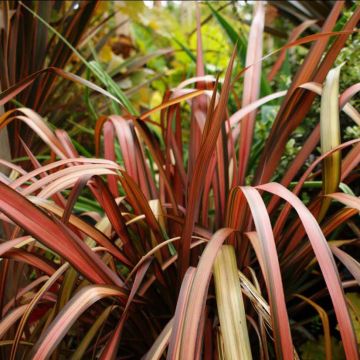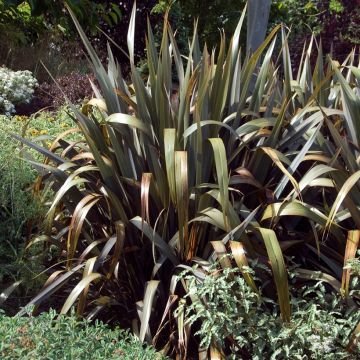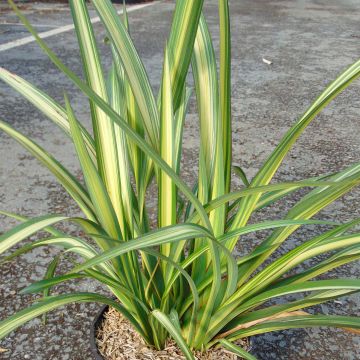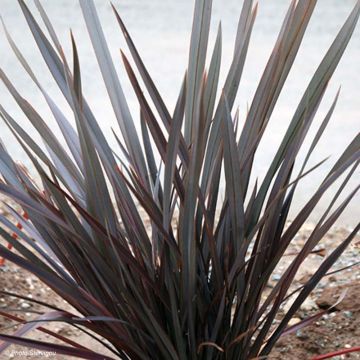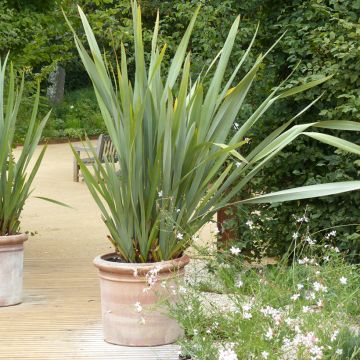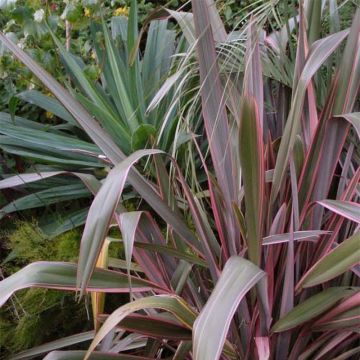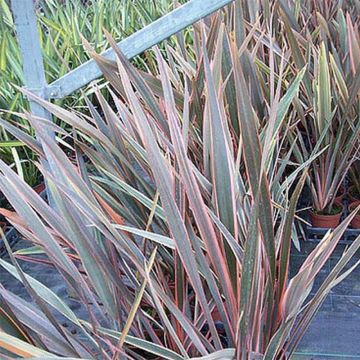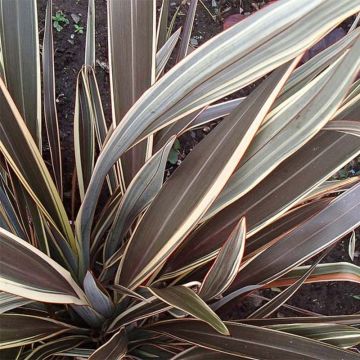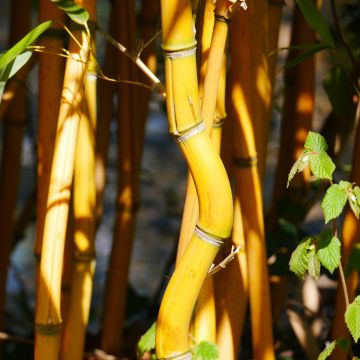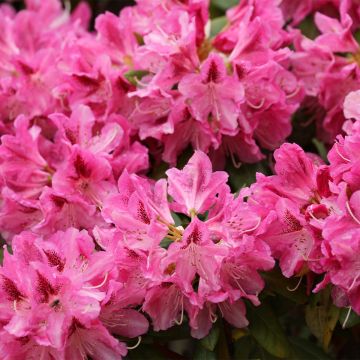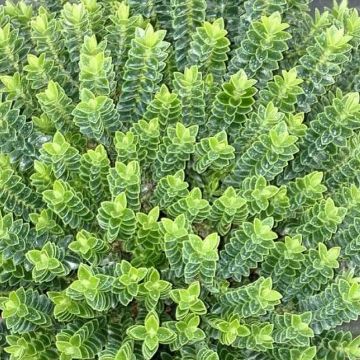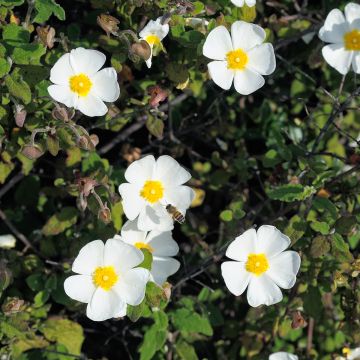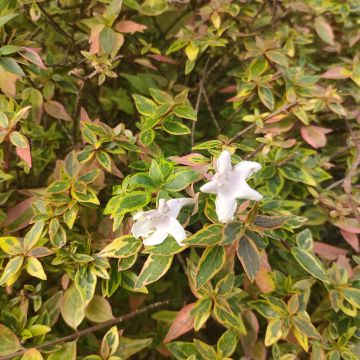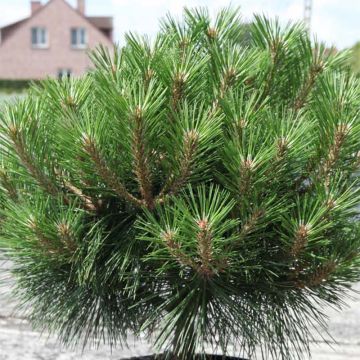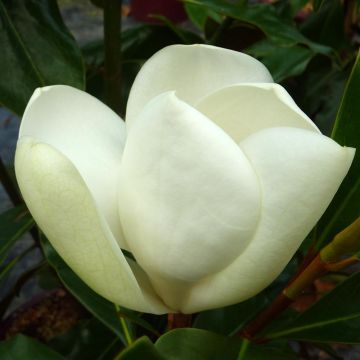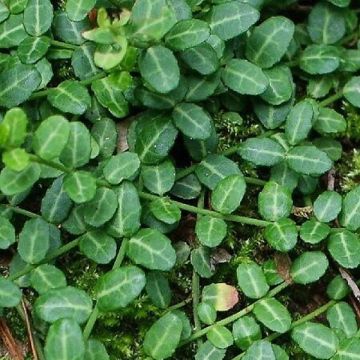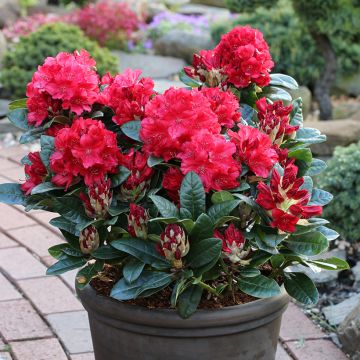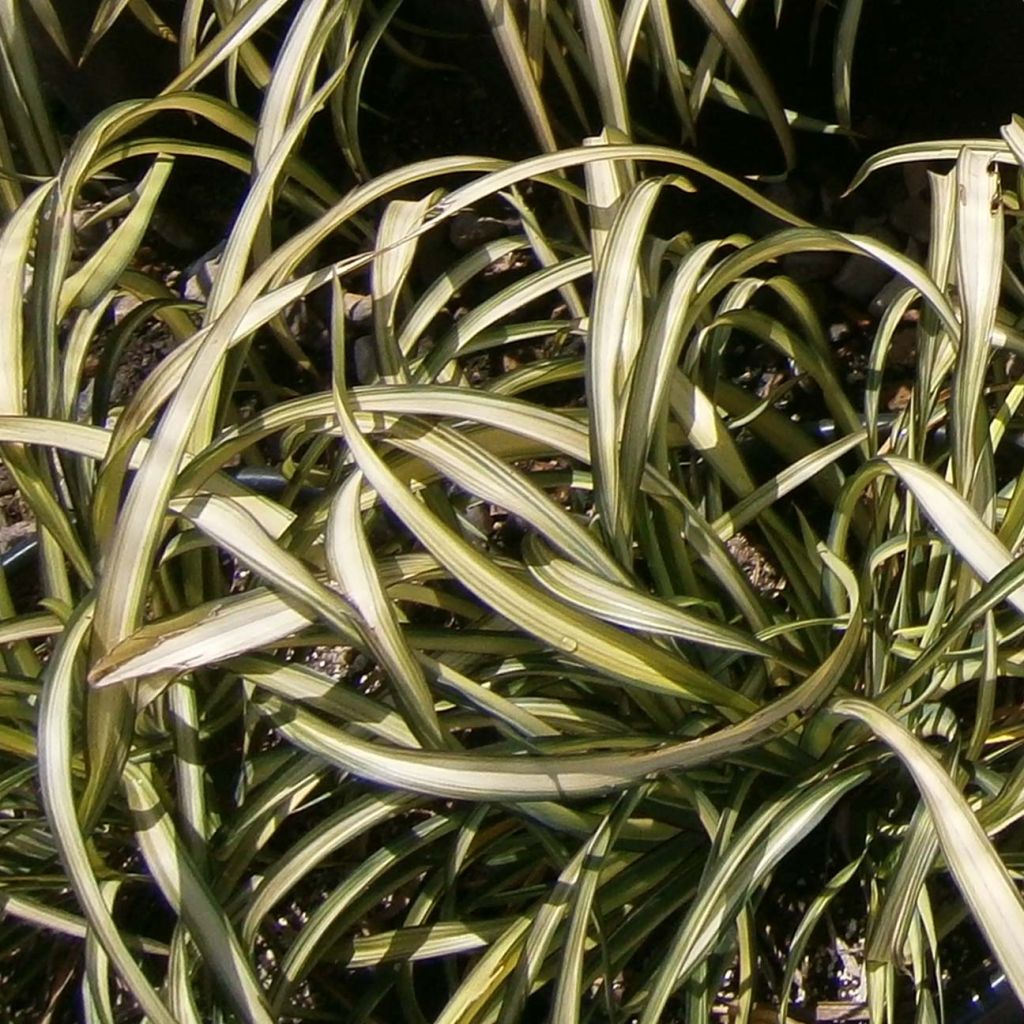

Phormium cookianum Blondie - Lin de Nouvelle-Zélande
Phormium cookianum Blondie
Phormium cookianum Blondie
Mountain Flax, Wharariki, New Zealand Hemp
This item cannot be shipped to the selected country
Delivery charge from €5.90
More information
Schedule delivery date,
and select date in basket
This plant carries a 12 months recovery warranty
More information
We guarantee the quality of our plants for a full growing cycle, and will replace at our expense any plant that fails to recover under normal climatic and planting conditions.
From €5.90 for pickup delivery and €6.90 for home delivery
Express home delivery from €8.90.
Does this plant fit my garden?
Set up your Plantfit profile →
Description
The Phormium cookianum 'Blondie' unfolds into a superb variegated fountain of light. A beautiful architectural plant, this modest-sized variety stands out for its gracefully trailing habit and the unique brightness of its long, slightly spiralled, cream-yellow leaves margined with green. With its resemblance to a giant Chlorophytum, this evergreen plant offers a particularly exotic appearance in the garden throughout the year, including its summer flowering with erect spikes adorned with highly nectariferous tubular flowers. 'Blondie' prefers the mild and humid climates of the oceanic facade when planted in the ground. It will also thrive in a large container, to be overwintered in cool climates.
The Phormium cookianum, or mountain flax, belongs to the agavaceae family, just like its cousin the Phormium tenax, and both are native to New Zealand. However, the former shows less growth, is slightly less hardy, and prefers cooler, fertile soils. The recently obtained cultivar 'Blondie' in New Zealand is a compact form with trailing habit and variegated foliage. This superb rhizomatous perennial grows in a non-invasive clump. With an erect and gracefully arching habit, it reaches a height of approximately 60 cm depending on the growing conditions, with a spread of 50 to 60 cm. The leaves are quite slender, arched, flexible, slightly twisted, pointed at their ends, and notably trailing. Each leaf has a pale yellow to cream central area margined with green. Floral stems measuring at least 1 m appear from May to July, depending on the climate, overhanging the clump of foliage. They are green tinted with yellow and orange, arranged in curved flower spikes in the shape of tubes. They are followed by the formation of trailing spiralled fruits. This flowering attracts certain birds and many pollinating insects.
This Phormium is a plant of great ornamental value, particularly suitable for embellishing large pots due to its trailing habit. In the ground, it may be disappointing in Mediterranean climates, but splendid on the oceanic facade of our country. Used as a specimen or planted in groups, it structures the space and adds a very exotic charm to the garden. Like grasses, it is a wonderful perennial for a modern garden with clean lines. In colder regions, it can be placed in a very large pot on the terrace or balcony to admire its elegance in the summer and overwinter it frost-free in a cold greenhouse or a lightly heated conservatory. In an urban garden, it softens concrete structures. It can also be paired with purple foliage such as certain Japanese maples, physocarpus, or Pittosporum.
The Maoris use Phormiums as we use flax, for their fibers that are exploited in the textile industry. This is likely where the vernacular name 'New Zealand Flax' or 'Mountain Flax' comes from.
Report an error about the product description
Phormium cookianum Blondie in pictures
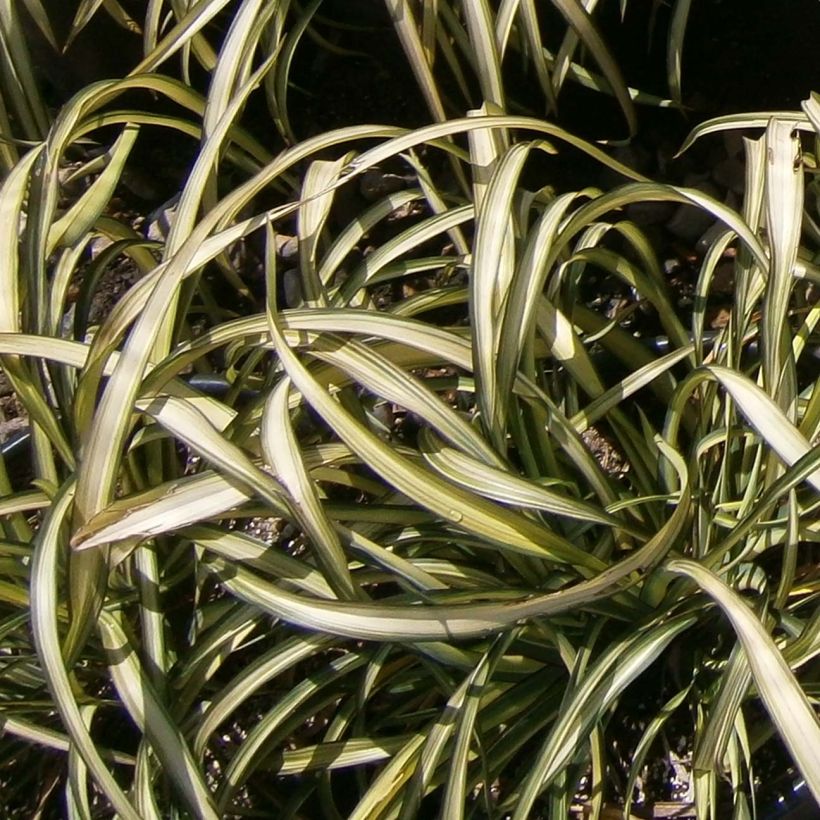

Flowering
Foliage
Plant habit
Botanical data
Phormium
cookianum
Blondie
Agavaceae
Mountain Flax, Wharariki, New Zealand Hemp
Cultivar or hybrid
Other Phormium
Planting and care
The Phormium cookianum 'Blondie' is a hardy plant that will be grown in the ground mainly in regions where frost does not go below -8°C (17.6°F). Elsewhere, pot cultivation is more suitable, which will allow wintering protected from frost in a cool and bright room.
Plant your Phormium in a container or a large pot with the bottom filled with gravel, broken pottery shards, or clay balls. The soil mix should be fertile and well-draining (1/3 leaf compost, 1/3 compost, and 1/3 ordinary garden soil).
Place the plant in full sun. Water generously during the growth period so that the soil never completely dries out. Feed the plant with fertilizer once a month. In winter, reduce water and fertilizer inputs and let the soil dry out superficially between waterings.
In regions with a mild climate and light frost, plant Phormium in the ground, in a very well-draining soil that is cool and fertile.
In summer, make sure the plant does not lack water. In winter, it can rely on rainwater.
In case of severe frost, apply a thick mulch at the base of the plant and cover it with a winter veil.
In the coldest regions, a thick mulch will help protect the roots from winter frost.
Planting period
Intended location
Care
-
, onOrder confirmed
Reply from on Promesse de fleurs
Evergreen shrubs
Haven't found what you were looking for?
Hardiness is the lowest winter temperature a plant can endure without suffering serious damage or even dying. However, hardiness is affected by location (a sheltered area, such as a patio), protection (winter cover) and soil type (hardiness is improved by well-drained soil).

Photo Sharing Terms & Conditions
In order to encourage gardeners to interact and share their experiences, Promesse de fleurs offers various media enabling content to be uploaded onto its Site - in particular via the ‘Photo sharing’ module.
The User agrees to refrain from:
- Posting any content that is illegal, prejudicial, insulting, racist, inciteful to hatred, revisionist, contrary to public decency, that infringes on privacy or on the privacy rights of third parties, in particular the publicity rights of persons and goods, intellectual property rights, or the right to privacy.
- Submitting content on behalf of a third party;
- Impersonate the identity of a third party and/or publish any personal information about a third party;
In general, the User undertakes to refrain from any unethical behaviour.
All Content (in particular text, comments, files, images, photos, videos, creative works, etc.), which may be subject to property or intellectual property rights, image or other private rights, shall remain the property of the User, subject to the limited rights granted by the terms of the licence granted by Promesse de fleurs as stated below. Users are at liberty to publish or not to publish such Content on the Site, notably via the ‘Photo Sharing’ facility, and accept that this Content shall be made public and freely accessible, notably on the Internet.
Users further acknowledge, undertake to have ,and guarantee that they hold all necessary rights and permissions to publish such material on the Site, in particular with regard to the legislation in force pertaining to any privacy, property, intellectual property, image, or contractual rights, or rights of any other nature. By publishing such Content on the Site, Users acknowledge accepting full liability as publishers of the Content within the meaning of the law, and grant Promesse de fleurs, free of charge, an inclusive, worldwide licence for the said Content for the entire duration of its publication, including all reproduction, representation, up/downloading, displaying, performing, transmission, and storage rights.
Users also grant permission for their name to be linked to the Content and accept that this link may not always be made available.
By engaging in posting material, Users consent to their Content becoming automatically accessible on the Internet, in particular on other sites and/or blogs and/or web pages of the Promesse de fleurs site, including in particular social pages and the Promesse de fleurs catalogue.
Users may secure the removal of entrusted content free of charge by issuing a simple request via our contact form.
The flowering period indicated on our website applies to countries and regions located in USDA zone 8 (France, the United Kingdom, Ireland, the Netherlands, etc.)
It will vary according to where you live:
- In zones 9 to 10 (Italy, Spain, Greece, etc.), flowering will occur about 2 to 4 weeks earlier.
- In zones 6 to 7 (Germany, Poland, Slovenia, and lower mountainous regions), flowering will be delayed by 2 to 3 weeks.
- In zone 5 (Central Europe, Scandinavia), blooming will be delayed by 3 to 5 weeks.
In temperate climates, pruning of spring-flowering shrubs (forsythia, spireas, etc.) should be done just after flowering.
Pruning of summer-flowering shrubs (Indian Lilac, Perovskia, etc.) can be done in winter or spring.
In cold regions as well as with frost-sensitive plants, avoid pruning too early when severe frosts may still occur.
The planting period indicated on our website applies to countries and regions located in USDA zone 8 (France, United Kingdom, Ireland, Netherlands).
It will vary according to where you live:
- In Mediterranean zones (Marseille, Madrid, Milan, etc.), autumn and winter are the best planting periods.
- In continental zones (Strasbourg, Munich, Vienna, etc.), delay planting by 2 to 3 weeks in spring and bring it forward by 2 to 4 weeks in autumn.
- In mountainous regions (the Alps, Pyrenees, Carpathians, etc.), it is best to plant in late spring (May-June) or late summer (August-September).
The harvesting period indicated on our website applies to countries and regions in USDA zone 8 (France, England, Ireland, the Netherlands).
In colder areas (Scandinavia, Poland, Austria...) fruit and vegetable harvests are likely to be delayed by 3-4 weeks.
In warmer areas (Italy, Spain, Greece, etc.), harvesting will probably take place earlier, depending on weather conditions.
The sowing periods indicated on our website apply to countries and regions within USDA Zone 8 (France, UK, Ireland, Netherlands).
In colder areas (Scandinavia, Poland, Austria...), delay any outdoor sowing by 3-4 weeks, or sow under glass.
In warmer climes (Italy, Spain, Greece, etc.), bring outdoor sowing forward by a few weeks.

































